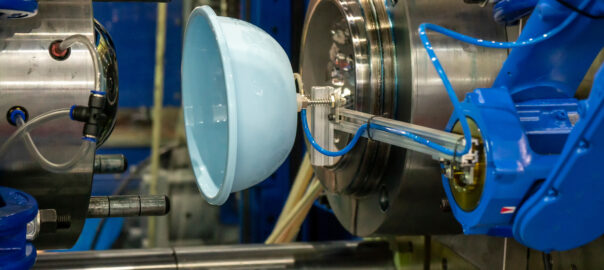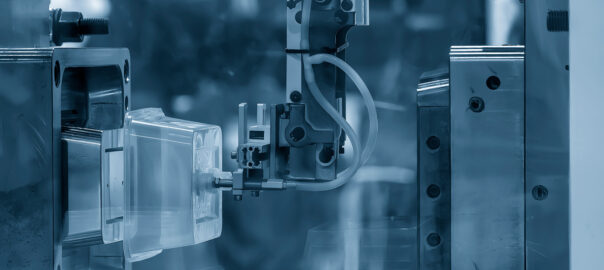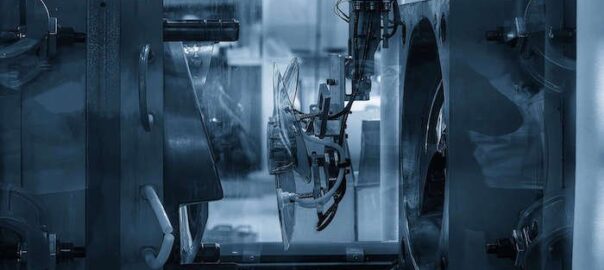Plastic injection molding is widely recognized for its ability to produce high-quality parts efficiently and at scale. However, to achieve the final look and functionality desired in many industries, secondary processes are often required to enhance aesthetics, add branding, or ensure durability. These processes can range from painting and coating to more advanced techniques such as laser etching, in-mold labeling, chrome plating, and other popular trends.
In this article, we’ll explore some of the most common and trending secondary processes used in plastic injection molding to improve the aesthetics and functionality of parts, while ensuring cost-efficiency and compatibility with the molding process.
1. Painting and Coating for Visual Appeal and Surface Protection
One of the most widely used secondary processes in plastic injection molding is painting or coating. It allows for adding color, texture, or protective finishes to plastic parts that don’t have the desired surface quality straight from the mold. Painting can also enhance the durability of parts by providing a protective layer that resists UV radiation, corrosion, or wear and tear.
Types of Painting Techniques:
-
Spray Painting: A traditional method where paint is evenly sprayed onto the part’s surface. This technique can produce various finishes, including high-gloss, matte, or metallic, making it highly versatile across multiple industries.
-
Powder Coating: A process where powdered paint is applied electrostatically and then cured under heat. Powder coating offers a more durable and corrosion-resistant finish than traditional painting, making it ideal for outdoor or industrial use.
-
UV Coating: A highly durable coating technique where a UV-sensitive coating is applied and then cured under ultraviolet light. This process produces scratch-resistant and quick-drying finishes and is used in products like consumer electronics and automotive interiors.
Industries that Utilize Painting:
-
Automotive: Spray painting and UV coating are extensively used in the automotive industry for interior parts like dashboards and trim components. Powder coating, meanwhile, is used for engine parts or other exterior components that need weather resistance.
-
Consumer Electronics: Manufacturers often rely on spray painting and UV coating for a smooth, scratch-resistant finish on plastic housings for devices like smartphones, laptops, and gaming consoles.
-
Home Appliances: Powder coating is common for home appliances that require a long-lasting finish, such as refrigerators, washing machines, and kitchen appliances.
2. Laser Etching for Precise, Durable Markings
Laser etching is a highly accurate and clean method used to create detailed and permanent markings on plastic parts. This process uses lasers to remove a thin layer of plastic, leaving behind logos, serial numbers, or intricate patterns. It’s ideal for adding permanent branding or functional features without adding additional materials like paint or ink.
Applications of Laser Etching:
-
Branding and Logos: Laser etching can add logos to plastic parts, especially where durability is critical, such as automotive or consumer electronics.
-
Functional Markings: Industries like aerospace and defense rely on laser etching to add part numbers, serial codes, or assembly instructions that won’t wear off.
-
Medical Devices: Medical equipment manufacturers often use laser etching for adding durable and non-toxic labeling to medical-grade plastics, such as instructions for use or safety markings.
Benefits of Laser Etching:
-
Produces highly precise and durable markings that won’t fade or peel over time.
-
Environmentally friendly since it doesn’t use additional chemicals or materials.
-
Suitable for a wide range of plastics, including ABS, polycarbonate, and nylon.
3. In-Mold Labeling (IML) for Durable Graphics and Branding
In-mold labeling (IML) is a secondary process where pre-printed labels or graphics are inserted directly into the mold before plastic injection occurs. As the plastic flows into the mold, it fuses with the label, creating a high-quality, durable finish. IML allows for complex, multi-color designs that are seamlessly integrated into the product without the need for post-production labeling or printing.
Benefits of In-Mold Labeling:
-
Durability: The label becomes part of the plastic part itself, ensuring it won’t peel or fade over time.
-
Cost-Efficiency: Since the labeling is done during the molding process, there’s no need for post-production labeling, reducing labor and production costs.
-
High-Quality Graphics: IML allows for high-resolution, multi-color graphics to be incorporated into the part, making it a favorite in the consumer packaging industry.
Industries that Use IML:
-
Food and Beverage Packaging: IML is widely used for plastic containers, such as yogurt cups or detergent bottles, where both durability and vibrant graphics are needed.
-
Consumer Goods: In-mold labeling is used in toys, personal care products, and household goods to add branding or instructional information.
-
Automotive: IML can be used in interior parts, such as dashboards, where graphics and text need to be permanent and resistant to wear.
4. Chrome Plating for Metallic Finishes
Chrome plating is a popular secondary process for giving plastic parts a sleek, metallic finish. It adds a decorative yet functional layer to plastic parts, making them look like metal while retaining the lightweight and cost advantages of plastic. Chrome plating is frequently used in automotive, consumer electronics, and home appliances for a high-end, premium look.
Applications of Chrome Plating:
-
Automotive Parts: Chrome-plated plastic parts are commonly used for exterior trims, emblems, grilles, and interior details, offering a metallic finish without the added weight of metal.
-
Consumer Electronics: Chrome-plated plastic is used for devices like gaming consoles, smartphones, and other electronics that require a high-gloss, polished look.
-
Home Appliances: Chrome plating adds a sleek finish to control panels, knobs, and other hardware, offering durability and an attractive appearance.
Trends in Chrome Plating:
-
Eco-Friendly Alternatives: Manufacturers are moving toward sustainable alternatives, such as PVD (Physical Vapor Deposition), which provides similar finishes to chrome plating but with a lower environmental impact.
5. Pad Printing and Screen Printing for Custom Graphics
Pad printing and screen printing are popular methods for applying logos, text, or decorative designs to plastic parts. These processes are ideal for adding custom branding to products where high detail and color accuracy are required.
Differences Between Pad and Screen Printing:
-
Pad Printing: Ideal for printing on curved or irregular surfaces. A silicone pad is used to transfer ink onto the surface of the plastic part, making it highly versatile and suitable for complex geometries.
-
Screen Printing: Primarily used for flat or slightly curved surfaces. Ink is transferred through a mesh screen, making it perfect for bold and simple designs, such as logos or text.
Industries that Use Pad and Screen Printing:
-
Medical Devices: These techniques are commonly used to add instructions, branding, or safety warnings to medical devices and packaging.
-
Consumer Goods: Electronics, toys, and sports equipment often feature custom graphics applied through pad or screen printing.
-
Automotive: Dashboard indicators, control panel labels, and interior branding are often added using screen printing for sharp, clear visuals.
6. Hydrographic Printing (Water Transfer Printing) for Complex Patterns
Hydrographic printing, also known as water transfer printing, is used to apply intricate patterns or designs to plastic parts, especially those with complex shapes. It involves placing a printed film onto water and then dipping the plastic part into it, allowing the pattern to adhere to the surface seamlessly.
Applications of Hydrographic Printing:
-
Automotive: Popular for adding wood grain, camouflage, or carbon fiber patterns to interior trims and exterior accessories.
-
Consumer Goods: Items like phone cases, furniture, or home appliances often use hydrographic printing for decorative patterns.
-
Sporting Goods: Hydrographic printing is used to apply camouflage or unique designs to helmets, gun stocks, and outdoor gear.
Benefits of Hydrographic Printing:
-
Provides 360-degree coverage of complex parts without seams or edges.
-
Can replicate a wide variety of patterns, such as wood grain, marble, or metallic finishes.
-
Offers a durable, water-resistant finish.
7. Hot Stamping for Metallic and Foil Finishes
Hot stamping is a secondary process where a heated die transfers metallic foil or pigments onto the plastic part, giving it a metallic or glossy finish. This process is often used for branding, logos, or decorative accents on high-end consumer goods.
Applications of Hot Stamping:
-
Luxury Consumer Products: Hot stamping is widely used for premium packaging, personal care products, and high-end electronics.
-
Automotive Interiors: Used to add metallic finishes or accents to dashboard components, control knobs, or logos.
-
Household Products: Many home goods, such as kitchen appliances, lighting fixtures, or furniture accents, use hot stamping for decorative effects.
Benefits of Hot Stamping:
-
Produces a high-gloss metallic finish that’s durable and scratch-resistant.
-
Adds a premium, luxury feel to consumer products.
-
Can be combined with other secondary processes, like painting or hydrographic printing, for a layered effect.
Conclusion: Enhancing Aesthetics with Secondary Processes
Secondary processes in plastic injection molding offer a wide array of options for improving the look, feel, and functionality of plastic parts. From painting and laser etching to in-mold labeling, chrome plating, and hot stamping, each process serves different purposes based on industry requirements, material compatibility, and desired aesthetics.
Om Raj Tech – Your Partner in Plastic Injection Molding Solutions
At Om Raj Tech, we offer a wide range of plastic injection molding solutions, including secondary processes to enhance the aesthetics and functionality of your products. Whether you need laser etching for branding, chrome plating for a metallic finish, or in-mold labeling for durable graphics, we can help you achieve the look and performance you need. Contact us today to learn how we can elevate your next project.



